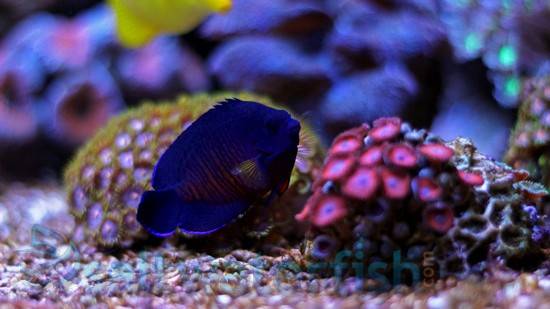Blue Hippo Tang - Melanesia
Paracanthurus hepatus
(0 Reviews)

Blue Hippo Tang - Melanesia
Paracanthurus hepatus
(0 Reviews)
{{ item.name }}
Size: {{ item.extra_field_3 }}
${{ getFormattedPrice(item.saleprice) }} ${{ getFormattedPrice(item.price) }}
To join the waiting list, click here
Free Shipping
With
$199.00
or more in Marine Life.
More details...
Blue Hippo Tang - Melanesia Care Facts
| Size: | Small |
|---|---|
| Care Level: | Expert |
| Temperament: | Peaceful |
| Reef Safe: | Yes |
| Diet: | Omnivore |
| Origin: | Fiji |
| Acclimation Time: | 3+ hours |
| Minimum Tank Size: | 90 gallons |
| Coral Safe: | Yes |
| Invertebrate Safe: | Yes |
Blue Hippo Tang
The Blue Hippo Tang, native to warm Indo-Pacific waters, including the Red Sea and Hawaiian Islands, inhabits coral-rich reefs, feeding primarily on algae. Reef-safe and peaceful, it grows up to 12 inches and can live over a decade in a spacious aquarium. Their diet includes algae-based foods, supplemented with marine algae and greens. When selecting tank mates, choose peaceful species, and provide ample space and hiding spots in a coral-rich environment. Captive-bred options support sustainable practices in the aquarium trade, reducing pressure on wild populations.
Habitat
Found in the warm Indo-Pacific waters, the Blue Hippo Tang thrives in coral-rich reefs, ranging from the Red Sea and eastern Africa to Hawaiian waters, feeding primarily on algae.
Reef Compatibility
The Blue Hippo Tang is a reef-friendly species, coexisting peacefully with corals and invertebrates, making it a great addition to reef aquariums due to its algae-eating habits.
Size and Lifespan
Reaching up to 12 inches in length, the Blue Hippo Tang is among the larger tang species and can live over ten years in spacious, well-cared-for aquariums.
Dietary Needs
As herbivores, they consume a variety of algae. A balanced diet of high-quality algae-based foods and marine algae supplements is crucial for captive Blue Hippo Tangs.
Aquaculture Efforts
To meet high demand, successful breeding through aquaculture is increasing, offering a sustainable option that lessens the impact on wild populations.
Compatibility and Tank Mates
Best kept with peaceful, non-aggressive fish, Blue Hippo Tangs require a large aquarium with ample hiding spots to prevent territorial behavior.
Aquarium Requirements
Mimicking their natural coral-rich reef habitat with plenty of swimming space and live rock for grazing and hiding is key to maintaining a healthy Blue Hippo Tang.
Alternative Names
The Blue Hippo Tang is also known as Palette Surgeonfish, Regal Tang, Royal Blue Tang, or Blue Tang, admired for its beauty and reef-safe nature in saltwater aquariums.
Reviewed by: Lawrence Peck on Dec. 23, 2024
Reviewed by: Jana Hess on April 22, 2024
Reviewed by: Matthew Dupree on March 5, 2024
He is doing great. thank you
Reviewed by: Ralph Kern on March 5, 2024
Reviewed by: Paul Sturgeon on Feb. 6, 2024
In good shape and eating well but is flashing a bit too
Reviewed by: Colin Devine on Jan. 1, 2024
Very beautiful and active, fun to watch.
Reviewed by: Steve Flaviani on Dec. 19, 2023
On the small side of what I expected, but is a striking addition and is doing great.
Reviewed by: Monte Puymon on Dec. 11, 2023
Reviewed by: Bruce Tassone on Nov. 14, 2023
Healthy great color
Reviewed by: Anthony Little on July 24, 2023
Color and size one the fish were great and it's doing well. 4 stars because fish was quite skinny looked almost starving on arrival but has been eating and doing well.
Reviewed by: Vincent Amrhein on July 3, 2023















